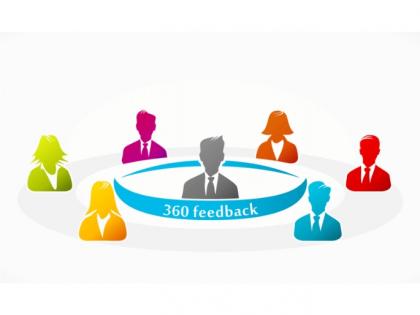Employee Performance Reviews With 360-Degree Feedback: What Works And What Doesn’t
By Impact Desk | Updated: February 28, 2025 18:47 IST2025-02-28T18:47:28+5:302025-02-28T18:47:44+5:30
Measuring employee performance is essential to workforce management, but traditional methods are no longer sufficient. A one-sided evaluation from ...

Employee Performance Reviews With 360-Degree Feedback: What Works And What Doesn’t
Measuring employee performance is essential to workforce management, but traditional methods are no longer sufficient. A one-sided evaluation from a manager may not fully capture an employee's contributions, strengths, and areas for improvement. A 360-degree feedback solution offers a holistic, multi-perspective assessment from peers, subordinates, supervisors, and other stakeholders. This all-around feature is an indispensable aspect of measuring employee performance.
A well-executed 360-degree feedback system helps organizations gain deeper insights, foster employee development, and build a high-performance culture.
Implementing 360-degree feedback for employee performance measurement
Before launching a 360-degree feedback program, organizations must establish clear goals. Questions such as whether the feedback supports employee development, informs promotions, or enhances teamwork are essential to address. Having clarity on these objectives ensures that the process remains structured, relevant, and impactful.
Selecting a reliable and scientifically backed assessment platform is critical. Mercer | Mettl's 360View is an advanced solution that provides customized, data-driven insights into employees' strengths and areas of improvement. With detailed analytics and insightful reports, organizations can make informed decisions to drive growth.
For feedback to be honest and constructive, respondents must feel safe and secure in sharing their observations. Guaranteeing confidentiality encourages employees to provide candid feedback without fearing repercussions. Communicating this assurance upfront can significantly boost participation and authenticity.
Including diverse perspectives in the feedback process is equally important. Input from managers, colleagues, and external stakeholders, where applicable, ensures a well-rounded evaluation.
To maximize the effectiveness of the feedback, organizations should train employees on providing constructive criticism, fostering objectivity, and maintaining professionalism. This training ensures that responses are helpful rather than vague or overly critical. Additionally, employees receiving feedback should be guided in how to interpret insights positively and constructively.
After the feedback process is complete, it’s crucial to offer employees guidance on how to improve. Organizations can provide coaching, skill-building programs, and mentoring opportunities to help employees translate insights into actionable growth.
How can you enhance the output of 360-degree feedback
360 assessment is not solely a performance rating mechanism, but it is a development tool. Employees should view feedback as an opportunity for growth, not as a determinant of promotions or salary hikes. Otherwise, responses may become manipulated or defensive, leading to inaccurate results.
However, collecting insights from 360-degree feedback without taking action can leave employees feeling discouraged. To maximize the impact of the feedback process, organizations must create action plans, set clear goals, and track progress based on the feedback results.
It’s also important to ensure that the questions posed in feedback surveys are clear and relevant. Ambiguous or irrelevant questions can lead to misleading feedback. Organizations should design well-structured, competency-based questionnaires that generate meaningful insights. Utilizing validated assessments like Mercer | Mettl's 360View can help ensure that feedback remains accurate and constructive.
Additionally, organizations should be mindful of the frequency and length of feedback sessions. Conducting frequent or lengthy feedback sessions can lead to survey fatigue, which reduces both engagement and response quality. Instead, organizations should strategically schedule feedback sessions once or twice a year to encourage meaningful participation.
Lastly, it’s essential to recognize that every workplace has a unique culture, and a one-size-fits-all approach rarely works effectively. Organizations must tailor their feedback programs to align with their specific leadership style, employee expectations, and work dynamics to foster a constructive environment for growth.
The Mercer | Mettl advantage in 360-degree feedback
Mercer | Mettl’s 360-degree feedback assessment is a versatile solution for organizations looking to enhance employee performance measurement. Its data-driven insights and automated reporting ensure objective and impartial evaluations.
Mercer | Mettl offers customizable feedback modules to fit organizational needs, insightful performance reports, a user-friendly platform for seamless execution, secure and online proctored test to enhance impartiality, minimize errors, and implement actionable development plans to drive employee growth.
A well-implemented 360-degree feedback process empowers employees, strengthens leadership, and fosters a culture of continuous improvement. However, organizations must focus on development, ensuring confidentiality, and avoiding common pitfalls.
With trusted solutions like Mercer | Mettl’s 360View and online proctored tools, companies can gain meaningful insights, drive employee performance, and build a resilient workforce. When done correctly, 360-degree feedback becomes a powerful tool for organizational transformation.
Open in app